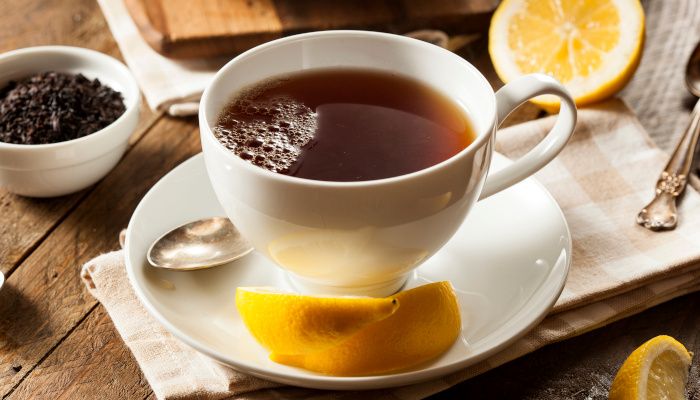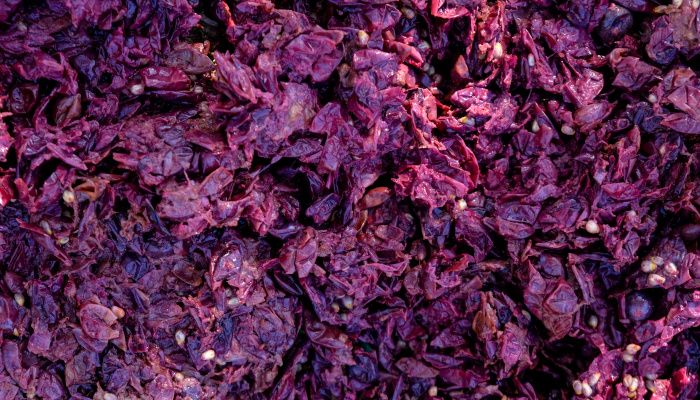Tannins in Wine
What are tannins in wine? How can we appreciate them? Which wines are high in tannins? In this article we explain what tannins are and their role in wine.

To understand tannins in wine we need to appreciate what tannins are. So, before reaching for the wine, put the kettle on. Make a cup of tea, preferably a strong cup of tea, and take a sip and see what happens in your mouth!
Two things occur as you drink the tea, there’s a physical drying sensation, then a slightly bitter taste. The stronger the tea, the more pronounced the two effects. The astringency, drying sensation, is the reaction of tannins to saliva. The bitterness is from taste receptors on the back of the tongue.
These feelings are important parts of the structure of a wine. Now take a drink of some red wine, swill it around your mouth and then spit it out! It isn’t a pretty sight as the stringy tannins can be seen in the saliva.
Take another sip and this time see if you can taste the tannins. It is very difficult, as the fruit from the wine will mask them, however, if you concentrate you may taste them.

What are tannins in wine?
Tannins are nature’s way of telling us not to eat something. They are in leaves, stalks and, more importantly, in unripe fruit. However, as the fruit ripens a transformation happens and we can eat the bounty or, more importantly, have ripe grapes to create wine.
Tannins belong to a group of compounds in wine that we call phenolics; colour is also another important group in this category. Red wine tannins mainly come from the grape skin, although they are found in stems, in seeds and a small amount can come from new oak barrels.
The amount of tannins in the skins of grape varieties isn’t the same. For example, Pinot Noir is a thin-skinned variety so tends to have medium levels of tannins. However, Cabernet Sauvignon and Malbec are thick-skinned varieties and have naturally occurring high levels of tannins.
Tannins form important structural components in red wines and are mostly extracted from the skins of the grapes during the fermentation process especially towards the end, as tannins are more readily absorbed in alcohol.
Many factors contribute to the number of tannins in the final wine: the variety, where the vineyard is located, how much sunshine there is when the grapes are harvested and what level of tannins the winemaker wants in their end product.

How do tannins work
Tannins are nature's glue and stick things together as well as to each other. As the grape ripens tannins polymerise, i.e. form long chains by joining together. This makes them less astringent, we say that the tannins are riper, and gives a smoother texture to the wine.
The more tannins in wine the more structure, full-bodied and meatier they are. An easy comparison is to have a Beaujolais like Georges Duboeuf Saint-Amour and compare it against La Celestina from Ribera Del Duero.
A benefit of tannins is they help a wine to age, although you do need lots of other factors like a good concentration of fruit and acidity to balance it. They act as a preservative and as the wine ages the tannins are said to soften, as they stick together and form a deposit in the bottle.
The perception of tannins is also influenced by other compounds in wine; a little sugar, for example, can make tannins seem softer whereas wines with high acidity can make tannins taste more astringent.
Combining these factors together for the thick-skinned Malbec variety, in Argentina, where there is lots of sun and very little cloud, you can produce smooth, fruity, early-drinking wines compared to Cahors, in France, where it isn’t as sunny, and the wine needs to age to produce a smoother wine.
Again, you can experience this for yourself with Acordeón Malbec compared with Château Haut-Monplaisir Cahors Tradition.
Factors in the wine-making process will affect the final amount of tannins due to what the producer wants and can also be adjusted, if necessary, to balance the wine. This is usually only performed in cheaper wines to produce a consistent product. Also, the winemaker can remove tannins from wine in a process called fining. This can help strip out unwanted astringency in wines, especially if the product is for an early-drinking style.

High Tannin Red Wines
Some great examples of approachable wines with high tannin levels, that you don’t need to age and are ready for drinking, are the Bordeaux Château La Garde, Italian Barolo Terre del Barolo Barolo and Ribera del Duero Parada de Atauta.
Low to medium Tannin Red Wines
To contrast the list above, try some wines made with Gamay or Grenache (Garnacha, in Spain) grapes, like Grosjean Gamay, Viña Zorzal Garnacha or any wine from Bierzo, and compare them with some entry level Burgundy wines, like for example a Henri Pion Bourgogne Pinot Noir.
Conclusion
It is always fun to try the same grape variety from different countries, areas, and producers so you can see the effects of tannins yourself.
As always, wine drinking, it’s a very personal matter and some people love that tannic grip of a Barolo whilst others enjoy a fruity, easy-drinking Beaujolais. If you like strong tea, then you will know which camp you are likely to fit into.
You may also be interested in: